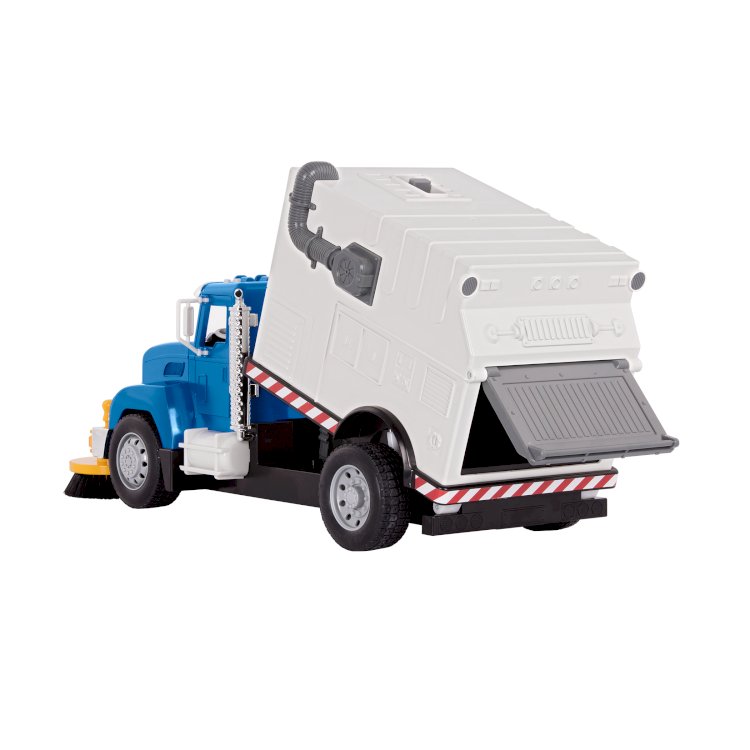Street Sweeper Market Size Grows at Steady CAGR of 5%
The growing need from factories and local governments and rising desire for eco-friendly and inventive items are projected to propel the expansion of the Global Street Sweeper Market during the forecast period between 2023 and 2029.

BlueWeave Consulting, a leading strategic consulting and market research firm, in its recent study, estimated the global street sweeper market size at USD 2,283.24 million in 2022. During the forecast period between 2023 and 2029, BlueWeave expects the global street sweeper market size to grow at a significant CAGR of 4.93% reaching a value of USD 3,047.3 million by 2029. Major growth drivers for the global street sweeper market include the rising demand from industrial units and municipalities. Technological advancements aimed at creating cost-effective solutions are set to further boost this expansion. Also, the market is expected to benefit from the broadening application of street sweepers due to their ability to deliver faster and more efficient cleaning results. To minimize high replacement costs, there is a growing need to enhance the durability of machinery components across various end-use industries, further propelling market growth. Also, increased investment in research and development for innovative cleaning methods and machinery is expected to drive product demand. The market will also be positively influenced by stringent government regulations and environmental protection initiatives. Hence, such aspects are expected to boost the expansion of the global electric boats market during the forecast period. However, the high initial setup and machinery costs may restrain the overall market growth during the period in analysis.
Global Street Sweeper Market – Overview
A street sweeper's primary role is to clean urban streets, initially serving as "sanitation workers" due to the growing importance of sanitation and waste management in cities. Traditionally, street sweepers used brooms and shovels to clear streets of debris, agricultural waste, and dirt. Later on, water-based methods were introduced. The 19th century saw the development of mechanical sweepers, enhancing efficiency. Modern street sweepers are now mounted on trucks and equipped with vacuum systems to collect waste effectively. Historically, older street sweepers left small debris particles, which were considered less problematic since rain would wash them away. Today, these small particles are recognized as significant stormwater pollutants. Street sweeping has emerged as an effective means of reducing stormwater runoff pollution, endorsed by the Environmental Protection Agency as a best practice for water quality protection. While newer street sweepers can capture smaller debris particles, traditional mechanical broom-type sweepers still dominate the US market, constituting around 90% of all street sweepers in use today.
Sample Request @ https://www.blueweaveconsulting.com/report/street-sweeper-market/report-sample
Impact of COVID-19 on Global Street Sweeper Market
COVID-19 pandemic adversely affected the global street sweeper market. As the world grappled with the virus, many municipalities and urban areas faced budgetary constraints, leading to delayed or reduced investments in street sweeping equipment. Social distancing measures and lockdowns also disrupted manufacturing and supply chain activities, affecting the availability of street sweeper components. However, the pandemic highlighted the importance of clean and hygienic public spaces, driving awareness about the significance of street sweeping in maintaining urban hygiene. This awareness led to renewed interest and potential market growth as communities prioritized cleanliness and sanitation in a post-pandemic world.
Global Street Sweeper Market – By Application
Based on application, the global street sweeper market is divided into Municipality, Airport & Seaports, Industrial Road & Highway, and Large-scale Retail Channels segments. The municipality segment held the highest share in the global street sweeper market by application. This dominance can be attributed to the extensive use of street sweepers by municipal authorities to maintain urban cleanliness and sanitation. Municipalities rely on street sweepers to effectively remove debris, litter, and contaminants from streets, contributing to a healthier and aesthetically pleasing environment. Also, stringent environmental regulations have encouraged municipalities to invest in advanced street sweeping equipment to mitigate pollution and meet cleanliness standards, further driving the prominence of this segment in the market.
Competitive Landscape
Major players operating in the global street sweeper market include Bucher (Johnston), Zoomlion Environmental, RAVO, Hako, FAUN, Aebi Schmidt, Elgin Street Sweepers, Alamo Group, FULONGMA, Alfred Karcher, Dulevo, Tennant, Egholm, TYMCO, and Boschung. To further enhance their market share, these companies employ various strategies, including mergers and acquisitions, partnerships, joint ventures, license agreements, and new product launches.
Contact Us:
BlueWeave Consulting & Research Pvt. Ltd
+1 866 658 6826 | +1 425 320 4776 | +44 1865 60 0662





























